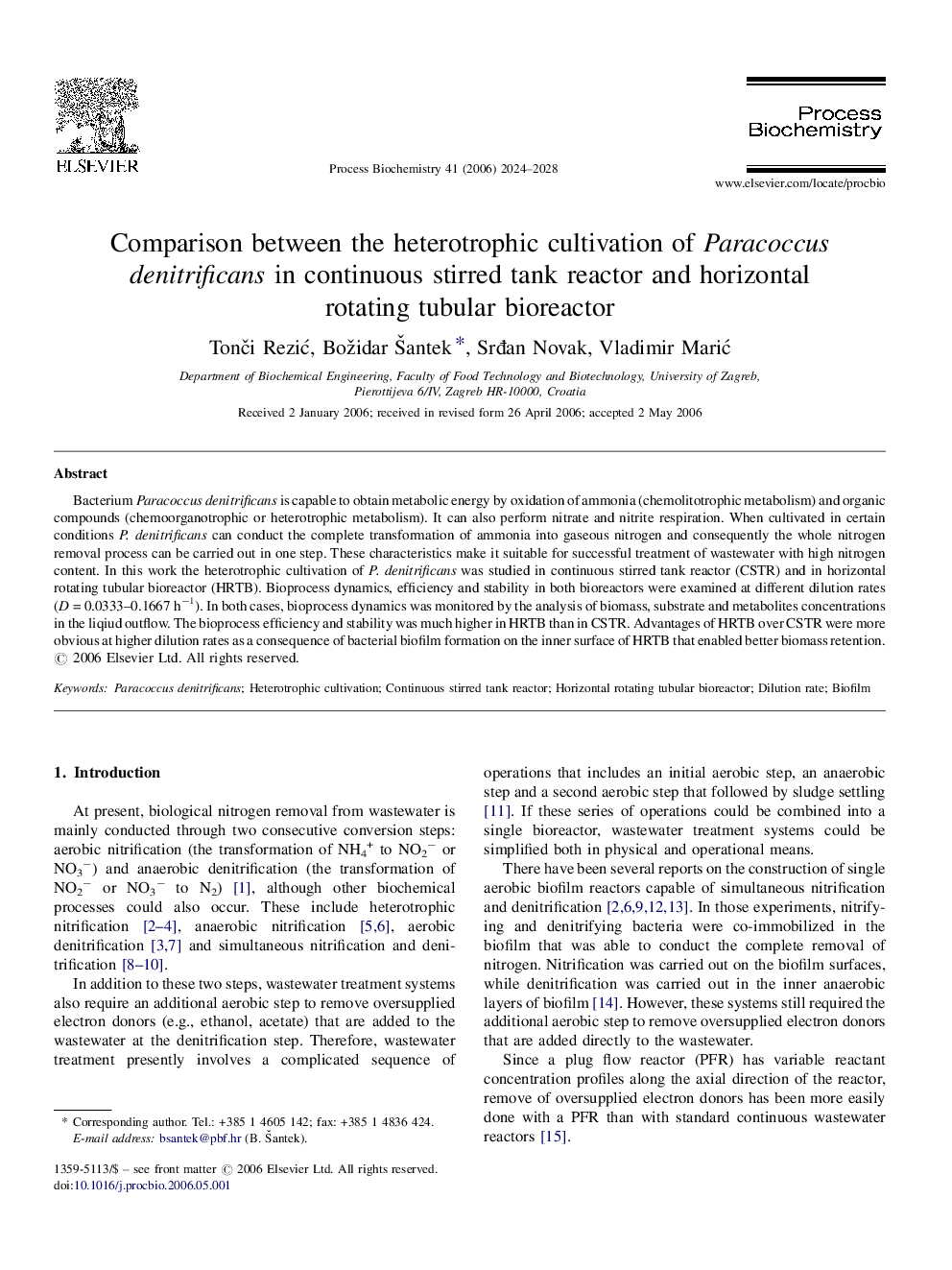| Article ID | Journal | Published Year | Pages | File Type |
|---|---|---|---|---|
| 36054 | Process Biochemistry | 2006 | 5 Pages |
Bacterium Paracoccus denitrificans is capable to obtain metabolic energy by oxidation of ammonia (chemolitotrophic metabolism) and organic compounds (chemoorganotrophic or heterotrophic metabolism). It can also perform nitrate and nitrite respiration. When cultivated in certain conditions P. denitrificans can conduct the complete transformation of ammonia into gaseous nitrogen and consequently the whole nitrogen removal process can be carried out in one step. These characteristics make it suitable for successful treatment of wastewater with high nitrogen content. In this work the heterotrophic cultivation of P. denitrificans was studied in continuous stirred tank reactor (CSTR) and in horizontal rotating tubular bioreactor (HRTB). Bioprocess dynamics, efficiency and stability in both bioreactors were examined at different dilution rates (D = 0.0333–0.1667 h−1). In both cases, bioprocess dynamics was monitored by the analysis of biomass, substrate and metabolites concentrations in the liqiud outflow. The bioprocess efficiency and stability was much higher in HRTB than in CSTR. Advantages of HRTB over CSTR were more obvious at higher dilution rates as a consequence of bacterial biofilm formation on the inner surface of HRTB that enabled better biomass retention.
